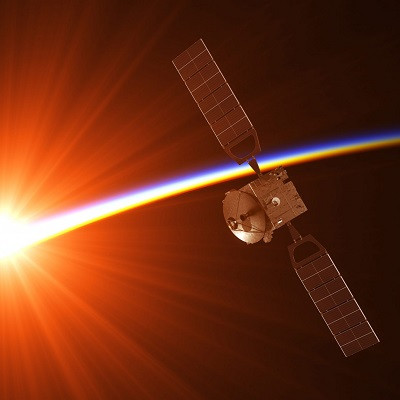
2021-11-16
Visited : 1106
A British start-up is developing graphene technology in order to enhance the ability of satellites to regulate their temperature.
Space is full of astonishing extremes, and temperature in space is no different. Between Sun-facing and Earth-facing aspects, a satellite can experience temperature variations of more than 400°C.
The effects of a satellite becoming too hot or cold can be far-reaching, from interruption of the applications we use every day to dramatically impacting our emergency services. Currently, thermal management options are not optimal; they are large, heavy and entail high power consumption, which can quickly diminish a satellite’s power reserves.
Graphene-based solutions
Now, a spin-out of the University of Manchester, SmartIR, is building a cost-effective solution that will ensure satellites can control thermal radiation on demand.
The team at SmartIR has developed a graphene-based smart coating for satellites, allowing them to manage thermal energy in real-time, depending on whether a satellite’s surface is Earth’s shadow or on the side closest to the Sun.
This graphene technology is a far more optimal solution as it is lightweight, has a low power consumption, can respond quickly to temperature changes, operates across the infrared spectrum, and involves no moving parts.
Funding space technology
SmartIR has now joined the European Space Agency Business Incubation Centre United Kingdom (ESA BIC UK) at the Science and Technology Facilities Council’s (STFC) Daresbury Laboratory.
This is enabling the company to take full advantage of the funding and support available in space and satellite technologies to further this commercial development.
The ESA BIC UK is part of the world’s largest business incubation programme for space tech start-ups. It has assisted over 100 businesses with achieving their goals of developing innovative products and services for an increasingly competitive, global marketplace.
Commercial developments for space
Professor Coskun Kocabas, SmartIR’s Scientific Director and co-founder, explained: “There is a clear need for a cost-effective solution that will enable satellites to regular their temperature automatically and in real-time.
“Applying graphene technology to space industry is a fantastic opportunity to take the capabilities of current thermal management systems to a new level, whilst significantly reducing satellite power consumption and cost.
“Our current primary focus is on the testing and validation of our patented technology to meet the requirements of the space industry. Being part of the ESA BIC UK, with access to funding, space facilities, business support and valuable collaboration opportunities, is incredibly important to us.”
Paul Vernon, Head of STFC’s Daresbury Laboratory, added: “UK start-ups are increasingly using space technologies to create new products and services, whether that’s for use here on Earth or for satellites in space. To see SmartIR incorporating graphene-based technology into satellite technology is really exciting.”
“I’m particularly thrilled to see a University of Manchester (the home of graphene) spin-out join the ESA BIC UK at Daresbury, and to be able to provide the essential support it needs to bring its game-changing technology to commercial reality.
“The space industry is a priority for regional economic growth across the UK and I’m thrilled to be able to support SmartIR in the development of such pioneering technology. I wish it every success as it takes its technology to the next level.”
Read the original article on Innovation News Network.